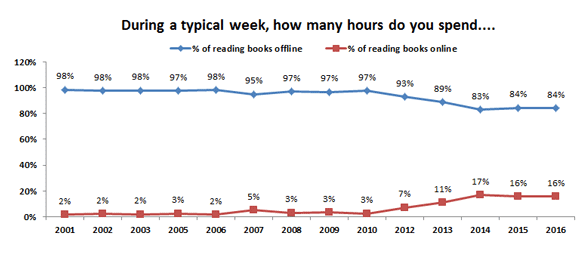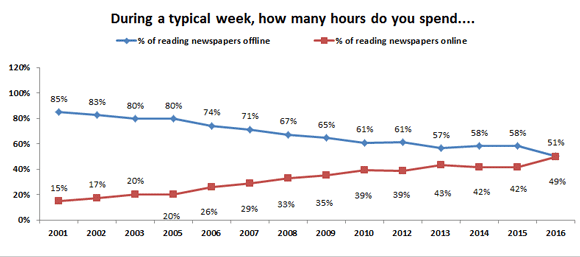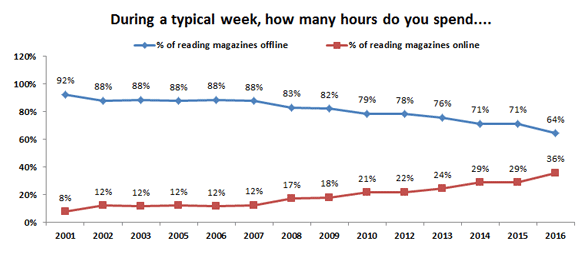Fourteen of the annual studies by the Center illuminate how online access to the written word is progressively changing the ways that Americans read — including major shifts in reading newspapers online and offline.
___________________________________________________________________________________
How are online access to books, magazines, and newspapers affecting American reading habits?
Since 2001, the Center’s Digital Future Studies have explored the amount of time that Americans spend reading — both online and offline. The studies quantify the profound shift in how readers of books, newspapers, and magazines are spending more of their time engaging the written word on the internet, and less offline.
This trend is most dramatic for time spent with newspapers, and least so for book reading.
Modest but growing changes in book reading
In 2001, 98% of time spent reading books was offline, compared to 2% online. By 2016, reading offline had decreased to 84%, with the decrease really starting after 2010.

Newspapers: near-parity for reading online and offline
For newspapers, the slide of offline reading has been gradual, continuous, and large overall.
In 2001, 85% of time spent reading newspapers was offline (compared to 15% online). By 2016 offline reading had decreased to just 51%.
We have reached the point where the majority of newspaper reading will soon be done online.

Magazines: steady changes
The increase in online reading for magazines is more dramatic than that for books, but not as notable as that for newspapers.
In 2001, 8% of magazine reading was done online, compared to 82% offline. By 2016, online magazine reading had increased to 36%.
After an initial jump in 2002, the trend line for online reading was constant (12%) until after 2007. Since then, the time spent offline with magazines has gradually and steadily declined.

__________
See all Web Insights
September 19, 2017

